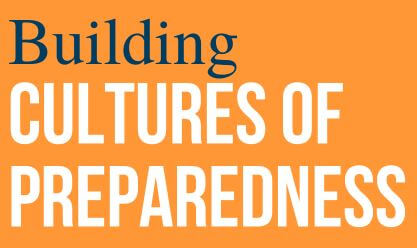Building Cultures of Preparedness
Efforts over the last two decades to prepare communities for disasters have failed and new methodologies need to be developed, according to research by FEMA’s Higher Education Program.

The FEMA Higher Education National Emergency Training Center Building Preparedness report highlights the vast diversity of American communities and households, indicating that a one-size-fits-all strategy is not well-suited to the specific demands of variable and distinctive environments – our Culture of Preparedness will have to be built one community at a time.
This report presents a culture-based approach to
1. Trust – Develop trust by understanding the culture, context, and history of communities outside of
2. Inclusion – Bring the cultural perspectives of all stakeholders to the table.
3. Cross-cultural communication – Design communication efforts as cross-cultural encounters.
4. Support local practices and successes – Learn about the ways people are already prepared and enhance these efforts using culturally aware strategies.
Read the full FEMA Higher Education National Emergency Training Center report here.
